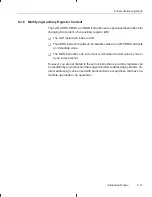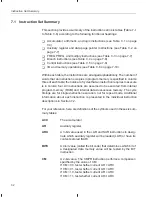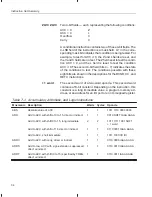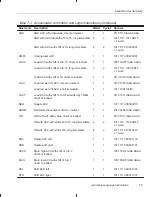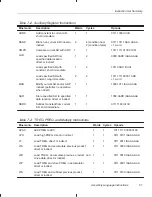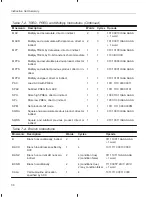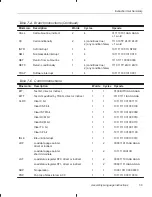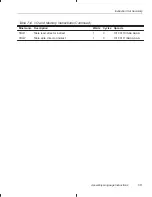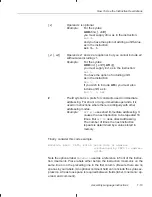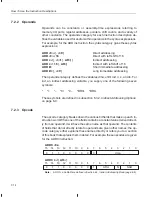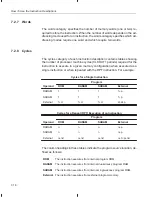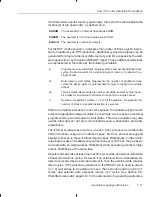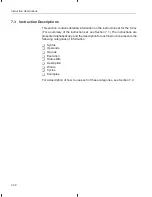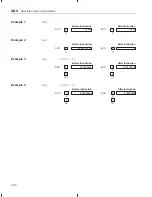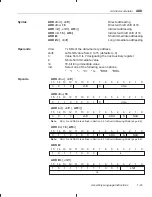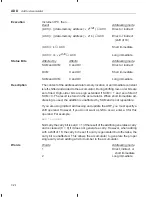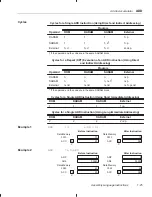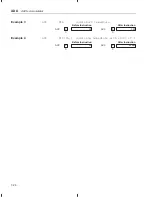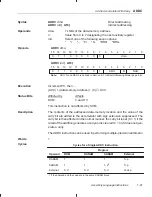
How To Use the Instruction Descriptions
7-12
7.2
How To Use the Instruction Descriptions
Section 7.3 contains detailed information on the instruction set. The descrip-
tion for each instruction presents the following categories of information:
-
Syntax
-
Operands
-
Opcode
-
Execution
-
Status Bits
-
Description
-
Words
-
Cycles
-
Examples
7.2.1
Syntax
Each instruction begins with a list of the available assembler syntax expres-
sions and the addressing mode type(s) for each expression. For example, the
description for the ADD instruction begins with:
ADD
dma [ , shift ]
Direct addressing
ADD
dma, 16
Direct with left shift of 16
ADD
ind [ , shift
[ , AR
n] ]
Indirect addressing
ADD
ind, 16 [ , ARn]
Indirect with left shift of 16
ADD #
k
Short immediate addressing
ADD #
lk [ , shift ]
Long immediate addressing
These are the notations used in the syntax expressions:
italic
symbols
Italic symbols in an instruction syntax represent variables.
Example:
For the syntax:
ADD
dma
you may use a variety of values for
dma.
Samples with this syntax follow:
ADD DAT
ADD 15
boldface
characters
Boldface characters in an instruction syntax must be typed as
shown.
Example:
For the syntax:
ADD
dma, 16
you may use a variety of values for
dma, but the
word ADD and the number 16 should be typed
as shown. Samples with this syntax follow:
ADD 7h, 16
ADD X, 16



